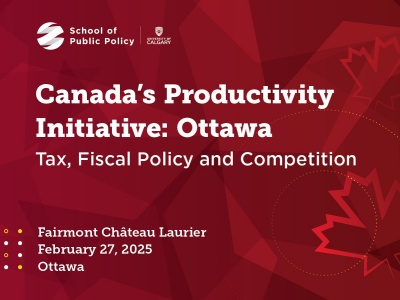Paying for the Lockdown
The global economic lockdown implemented to contain the Covid-19 virus has caused the most severe economic downturn in Canada since the Great Depression in the 1930s. The cumulative output loss could easily amount to 15 percent of GDP by 2023 and could continue to grow for years thereafter. So far, the government policy response has, on average, more than compensated Canadians for their lockdown-induced income losses. But the bill has to be paid eventually. Incurring debt to support incomes simply shifts the income loss into the future. Some time shifting makes sense, but it is hard to make a convincing case that the benefits of stabilizing the economy extend beyond the current generation and even harder to defend shifting the burden of excess compensation to future generations. Fairness requires that the lockdown-induced increase in debt be retired before the next generation starts working and paying taxes, which will occur 18 to 25 years from now.
This recommendation is at odds with the frequent observation that the additional debt will not impose a cost on future generations because interest rates are so low. As long as the government’s borrowing costs grow no faster than current dollar output, debt can indeed be financed without raising tax rates or cutting government spending. The historical record suggests such fiscal sustainability is possible, albeit far from guaranteed. But even if the fiscal cost of debt can be avoided, the economic cost cannot. The economic cost will arise from some combination of reduced business investment and higher debt servicing charges on imported capital.
A second fairness issue is how the income loss should be shared among the current generation. Since the government’s response has shifted the economic cost of the lockdown into the future, how the roughly $400 billion debt is repaid will have a big impact on the distribution of the burden. A Parliamentary committee would be a good vehicle for exploring options for sharing by income category and age group as well as for examining the split between expenditure restraint and tax increases.
Among other issues, the committee should consider:
- Whether the burden should rise with income and if so, by how much. A starting point for the discussion could be the progressivity of the combined personal income tax system and the GST.
- Whether income should be defined on an individual or family basis.
- How contributions to debt repayment should be distributed among age groups. The length of the debt repayment period is a key factor here: as the repayment period gets shorter the contribution of the oldest age category rises relative to that of the youngest.
- How to minimize the cost of debt repayment without compromising equity objectives. Both expenditure restraint and tax increases should be considered. The focus on the expenditure side should be reductions in business subsidies while tax measures should avoid increasing the tax burden on investment, which would be a particularly damaging way to raise revenue.
The amount of fiscal consolidation required to retire the lockdown-related increase in debt accrued so far is substantial. For example, even if debt financing costs remain half a percentage point below the assumed trend growth in nominal GDP, the budget balance would have to improve by .7 percent of GDP to pay off the debt over 21 years. Using 2019 GDP as the base, the increase would be about $16 billion a year starting in 2025. Federal taxes would have to increase almost 6 percent to raise all the required revenue.
The issue of overcompensation also needs to be monitored and action taken if necessary. Government income support payments for workers exceeded the income loss up to June by more than $20 billion. The average amount of overcompensation could rise or fall over time as the economy continues to underperform and as the menu of support measures changes. However, individual and household outcomes also need to be monitored. One way to reduce the scope for overcompensation would be to make all new initiatives and extensions of existing programs subject to a social benefits repayment tax that would be based on the change in income over time as well as its level. Applying this approach retroactively would raise fairness issues, but so would arbitrary income transfers among Canadians.


